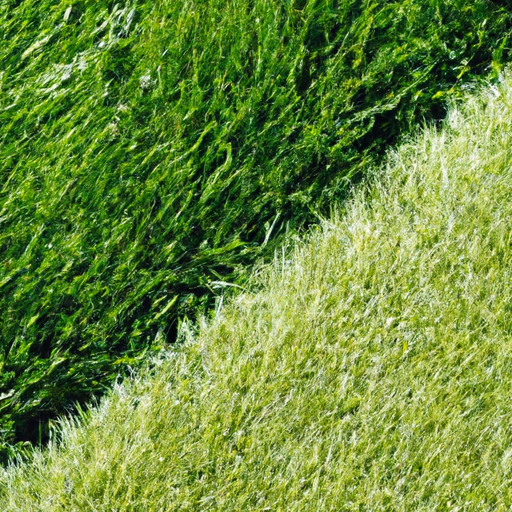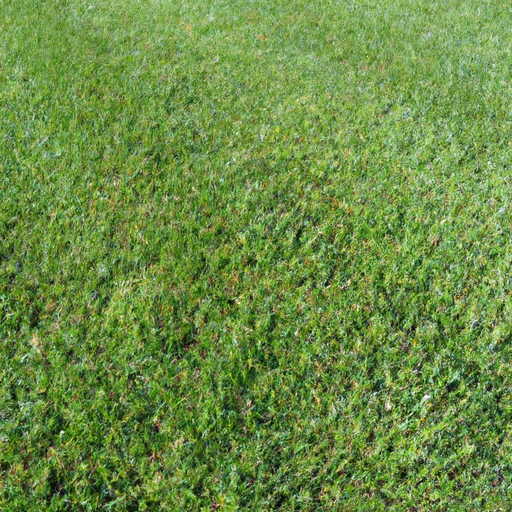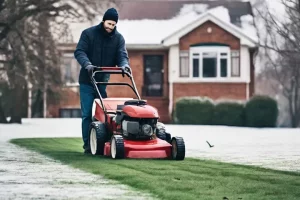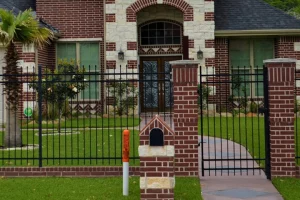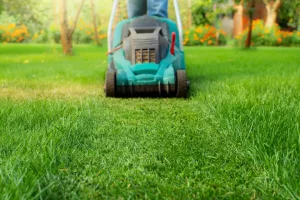
Have you ever wondered how to keep your lawn looking vibrant and lush all year round? Well, look no further! This article discusses why creeping bentgrass is an excellent choice for northeastern and northwestern United States homes. Whether you live in New England's beautiful rolling hills or the Pacific Northwest's breathtaking landscapes, this hearty grass will impress. So, let's dive in and discover all this grass's benefits!
Creeping bentgrass is a type of grass well-suited for cooler climates, making it an ideal choice for homeowners in the northeastern and northwestern regions of the US. This grass is known for its ability to withstand cold temperatures and even thrive in shade, making it perfect for those areas where sunlight may be limited. Not only that, but creeping bentgrass has excellent drought resistance, allowing it to keep its vibrant green color even during periods of limited rainfall. (Source: Lawn Informer)
One of the critical advantages of creeping bentgrass is its exceptional ability to create a dense and lush lawn. This grass spreads rapidly and forms a thick mat, which looks aesthetically pleasing and helps to choke out weeds and other undesirable plants. Its dense growth also creates a soft and smooth surface, perfect for barefoot walks or picnics in your backyard. Moreover, creeping bentgrass has a high tolerance for foot traffic, making it an excellent choice for families with children or pets who love to play outdoors.
In conclusion, creeping bentgrass is the perfect choice if you're looking for grass that can withstand the harsh climates of the northeastern and northwestern United States while still providing a beautiful and vibrant lawn. Its ability to thrive in cooler temperatures, shade and impressive drought resistance make it a hardy and low-maintenance option.
Additionally, its dense growth and tolerance for foot traffic make it an excellent choice for creating a lush and enjoyable outdoor space for you and your family. To learn more about how to care for and maintain creeping bentgrass, keep reading our upcoming article! It is a type of grass that offers numerous benefits for homeowners in the northeastern and northwestern regions of the United States.
Whether you want to improve your lawn's appearance or want a low-maintenance option that can withstand the harsh weather conditions of these areas, creeping bentgrass is an excellent choice. In this article, we will explore the many advantages of this grass, factors to consider before planting it, how to establish and maintain a healthy lawn, alternatives to creeping bentgrass, and the cost and return on investment.
The Benefits of Creeping Bentgrass for Northeastern and Northwestern US Homes
Drought Tolerance
One of the main advantages of creeping bentgrass is its remarkable drought tolerance. The ability to maintain healthy growth even during periods of limited water availability makes it an ideal choice for homeowners in regions with dry summers. With creeping bentgrass, you can enjoy a lush green lawn without the constant watering.
Cold Tolerance
Another significant benefit of creeping bentgrass is its exceptional cold tolerance. With its ability to withstand freezing temperatures and frost, this grass is well-suited to the harsh winters in the northeastern and northwestern United States. Unlike other grass varieties that may turn brown or die off during winter, creeping bentgrass can maintain its attractive appearance year-round.
Low Maintenance
Creeping bentgrass is the answer if you are looking for a low-maintenance lawn option. Unlike other grass varieties that require frequent mowing and extensive care, creeping bentgrass has a slow growth rate, reducing the need for constant maintenance. This grass also has a fine texture, which means it can be mowed at a lower height, resulting in less time spent on lawn care.
Fine Texture
Creeping bentgrass is known for its fine texture, which gives it a luxurious and visually appealing look. The narrow leaf blades of this grass create a dense and even turf, providing a smooth and soft surface for walking and playing. The fine texture of creeping bentgrass is often preferred by homeowners who value the aesthetic appeal of their lawn.
Versatility
Creeping bentgrass is versatile and can be used in various landscape applications. Whether you want to create a beautiful lawn, improve the appearance of your golf course, or enhance the look of parks and public spaces, this grass can meet your needs. Its ability to adapt to different soil conditions and withstand heavy foot traffic makes it a versatile choice for northeastern and northwestern United States homeowners.
Factors to Consider Before Planting Creeping Bentgrass
Before planting creeping bentgrass, it is essential to consider several factors to ensure successful growth and maintenance. These factors include soil pH and composition, sun and shade requirements, drainage, pest and disease resistance, and maintenance considerations.
Soil pH and Composition
Creeping bentgrass thrives in slightly acidic to neutral soil with a pH range of 5.8 to 7.0. Before planting, it is recommended to test your soil's pH and make any necessary amendments to achieve the optimal pH level. Additionally, the soil composition should be well-draining to prevent waterlogged conditions, which can negatively impact the health of creeping bentgrass.
Sun and Shade Requirements
While creeping bentgrass prefers full sun, it can tolerate partial shade. However, I would like to point out that excessive shade can lead to sparse and weak growth. If your lawn has areas with significant shade, consider alternative grass options or improve sunlight exposure, such as pruning trees or removing obstacles that cause shade.
Drainage
Proper drainage is crucial for the healthy growth of creeping bentgrass. Please ensure your lawn has adequate drainage to prevent the accumulation of water, which can lead to root rot and other issues. If your soil has poor drainage, you may need to amend it with organic matter or consider installing drainage systems to ensure the success of creeping bentgrass.
Pest and Disease Resistance
Although creeping bentgrass is relatively resistant to pests and diseases, monitoring for potential issues is still important. Regular inspection and proper cultural practices, such as good irrigation and timely fertilization, can help prevent pest and disease problems. If necessary, consult with a professional to identify and treat any issues.
Maintenance Considerations
While creeping bentgrass is low-maintenance compared to other grass varieties, it still requires some care to keep it looking its best. Consider factors such as mowing height, fertilization, irrigation, and weed control when planning your maintenance routine. Understanding the specific maintenance requirements of creeping bentgrass will ensure your lawn remains healthy and vibrant.
Preparing Your Lawn for Creeping Bentgrass
Before planting creeping bentgrass, it is essential to prepare your lawn correctly. This includes soil testing and amendments, removing weeds and existing grass, leveling the ground, and ensuring proper seeding.
Soil Testing and Amendments
Conduct a soil test to determine your soil's nutrient content and pH level. This will help you make the necessary amendments to ensure optimal conditions for creeping bentgrass. Common soil amendments include adding lime to raise pH levels or sulfur to lower them. Please follow the recommendations from your soil test results and make the appropriate amendments.
Removing Weeds and Existing Grass
Removing existing weeds or grass is essential to ensure that your creeping bentgrass seed or sod has the best chance of success. This can be done by hand-pulling, herbicides, or sod cutters for larger areas. Removing unwanted vegetation will prevent competition for nutrients and space, allowing the creeping bentgrass to establish itself more effectively.
Leveling the Ground
Before planting, leveling the ground to create a smooth surface for your creeping bentgrass is important. You can use a lawn roller or a leveling rake to remove bumps or depressions. A level lawn will help promote proper water drainage and prevent uneven grass growth.
Proper Seeding
When it comes to seeding creeping bentgrass, choosing the right seed mix is crucial. Opt for a seed blend specifically designed for your region and the conditions of your lawn. Follow the recommended seeding rate and evenly distribute the seeds across the prepared soil. It's essential to water the area immediately after seeding to provide moisture for germination.
Seeding and Establishing Creeping Bentgrass
Once you have prepared your lawn and planted the creeping bentgrass seeds, it's time to focus on establishing the grass and ensuring its healthy growth. This includes choosing the right seed mix, using proper seeding methods, implementing proper watering and irrigation techniques, and employing effective mowing and fertilization practices.
Choosing the Right Seed Mix
Selecting the right seed mix is essential for successfully establishing creeping bentgrass. Consider factors such as climate, soil type, and intended use of the grass when choosing a seed mix. Consult with local experts or professionals to ensure you select the most suitable option for your lawn.
Seeding Methods
There are several methods you can use to seed your creeping bentgrass. Broadcast seeding involves evenly distributing the seeds across the soil surface using a broadcast or hand spreader. Drill seeding involves creating furrows in the soil with a seed drill and placing the seeds directly into the furrows. Hydroseeding involves mixing the seeds with water and a mulch material and then spraying the mixture onto the soil. Choose the seeding method that is most convenient and appropriate for your lawn.
Watering and Irrigation
Proper watering and irrigation are crucial for the establishment of creeping bentgrass. The seeds require consistent moisture to germinate and establish roots. Water the area lightly and frequently, keeping the soil moist but not soggy. As the grass becomes established, gradually reduce the watering frequency, but provide deep soaks to encourage profound root growth.
Mowing and Fertilization
Once the creeping bentgrass reaches about 2 to 3 inches, it is time to mow it for the first time. Ensure your mower is set to the appropriate height to avoid scalping the grass. Mow regularly, removing no more than 1/3 of the grass blade height at each mowing. Fertilize the grass according to the specific needs identified in your soil test results. Follow the recommended fertilization schedule to provide the necessary nutrients for healthy growth.
Pest and Weed Control
Monitor your creeping bentgrass for any signs of pests or weed infestation. Act promptly to address any issues that may arise. Regularly inspect the grass for pests, such as insects or rodents, and use appropriate pest control methods to eliminate them. Employ effective weed control methods to prevent weeds from competing with the creeping bentgrass. This may involve hand-pulling, applying herbicides, or using pre-emergent weed control products.
How to Maintain a Healthy Creeping Bentgrass Lawn
Maintaining a healthy creeping bentgrass lawn is essential to ensure its long-term success and appearance. This includes proper mowing practices, watering and irrigation techniques, fertilization and soil amendments, aeration, and regular pest and weed control.
Proper Mowing Practices
Mowing is an essential aspect of maintaining a healthy creeping bentgrass lawn. Set your mower height, typically 0.5 to 1.5 inches, depending on the bentgrass variety. Avoid cutting the grass too short, as this can stress the plants and make them more susceptible to weeds and diseases. Please regularly sharpen your mower blades to clean cuts and minimize damage.
Watering and Irrigation Techniques
Watering is crucial for the health of creeping bentgrass, especially during dry periods. Water deeply and infrequently, allowing the grass to dry out between waterings. This promotes profound root growth and helps the grass withstand drought conditions. Use a sprinkler system or a soaker hose to ensure an even water distribution and avoid overwatering.
Fertilization and Soil Amendments
Regular fertilization is essential to keep your creeping bentgrass healthy and vibrant. Follow the recommendations from your soil test results to determine the appropriate type and amount of fertilizer to apply. Apply fertilizer in early spring and late summer or as recommended for your grass variety. Additionally, consider soil amendments such as organic matter or lime to maintain optimal pH levels and soil structure.
Aerating and Thatch Management
Regular aeration helps relieve soil compaction and promote healthy root growth in creeping bentgrass. Aerate your lawn once or twice a year, ideally during the spring or fall. This allows nutrients, water, and oxygen to penetrate the soil and reach the grassroots. Additionally, regularly monitor and manage thatch buildup, which can impede the growth and health of your creeping bentgrass. Thatch is the layer of dead plant material that accumulates between the grass blades and the soil. You can use a thatch or power rake to remove excessive thatch.
Regular Pest and Weed Control
Monitor your creeping bentgrass lawn for pests and weeds regularly. Look for signs of pest activity, such as chewed grass blades, tunnels, or disturbed soil. Employ appropriate pest control methods, such as insecticides or natural predators, to address any issues. Regularly inspect the lawn for weeds and promptly address any infestations using hand-pulling or targeted herbicides. This will help prevent weeds from competing with your creeping bentgrass and ensure its healthy growth.
Common Challenges and Troubleshooting Tips
While creeping bentgrass is a resilient and adaptable grass variety, it has challenges. Understanding and addressing common issues can help you maintain a healthy and attractive lawn. Some common challenges include drought stress and watering issues, weed and pest infestation, disease outbreaks, and compaction and thatch buildup.
Drought Stress and Watering Issues
Creeping bentgrass can experience drought stress without adequate water during dry periods. Water deeply and infrequently to prevent this, allowing the grass to dry out between waterings. Use proper irrigation techniques to ensure even moisture distribution and avoid overwatering, which can lead to shallow root growth and other issues.
Weed and Pest Infestation
Weeds and pests can negatively impact the health and appearance of your creeping bentgrass lawn. Remove weeds promptly and employ effective weed control methods to prevent weed infestation. Regularly monitor your grass for signs of pests and act promptly to address any issues that arise. Consult with professionals or local experts for specific pest control methods for your region.
Disease Outbreaks
While creeping bentgrass is relatively resistant to diseases, it is still susceptible to specific issues, including dollar spots, brown patches, and snow mold. Ensure you practice good cultural practices, such as proper irrigation techniques and avoiding excessive nitrogen fertilization, to minimize the risk of disease outbreaks. If you notice any signs of disease, consult a professional to determine the appropriate treatment methods.
Compaction and Thatch Buildup
Regular foot traffic and heavy equipment can lead to compaction and thatch buildup in your creeping bentgrass lawn. Regularly aerate the lawn to relieve compaction and promote healthy root growth. Monitor the thatch layer and remove excessive buildup using a thatch or power rake. Proper maintenance practices, such as regular mowing and removal of grass clippings, can help prevent excessive thatch accumulation.
Alternative Grass Options for Northeastern and Northwestern US Homes
While creeping bentgrass offers numerous benefits, some homeowners may have better choices. Here are some alternative grass options to consider for your northeastern and northwestern United States homes:
Kentucky Bluegrass
Kentucky bluegrass is popular for homeowners looking for a lush, deep-green lawn. It is known for its ability to withstand cold temperatures, making it suitable for the northeastern and northwestern regions. Kentucky bluegrass requires regular maintenance, including watering, fertilizing, and mowing.
Tall Fescue
Tall fescue is a resilient grass variety known for its excellent drought tolerance and adaptability to various soil types. It has a coarser texture compared to creeping bentgrass but requires less maintenance. Tall Fescue is an excellent choice for homeowners who desire a low-maintenance lawn that can withstand the challenging weather conditions of the northeastern and northwestern United States.
Ryegrass
Ryegrass is a cool-season grass known for its quick germination and establishment. It has a fine texture similar to creeping bentgrass and is suitable for regions with mild winters. Ryegrass is often used as a temporary grass solution or for overseeding lawns during the cooler months.
Buffalo Grass
Buffalo grass is a warm-season grass with excellent drought tolerance and requires minimal water and maintenance. While it may not be as visually appealing as other grass varieties, buffalo grass is well-suited for homeowners looking for a low-maintenance option in the northeastern and northwestern United States.
The Cost and Return on Investment of Creeping Bentgrass
When considering the installation of creeping bentgrass, it is essential to understand the associated costs and potential return on investment. While the initial installation costs may be higher than other grass varieties, the long-term maintenance expenses can be relatively lower due to the grass's low-maintenance nature. Additionally, a healthy and vibrant creeping bentgrass lawn can significantly increase your home's value and curb appeal.
Initial Installation Costs
The initial installation costs of creeping bentgrass can vary depending on various factors, including the size of your lawn, the type of seed or sod used, and any necessary soil amendments. It would be best to obtain cost estimates from professionals or local suppliers to understand the expenses involved.
Long-term Maintenance Expenses
Compared to other grass varieties, creeping bentgrass typically requires less maintenance, resulting in lower long-term expenses. The slow growth rate and low mowing requirements of creeping bentgrass reduce the need for frequent lawn care. Additionally, the grass's drought tolerance can result in savings on water bills, especially during dry periods.
Increased Home Value
A well-maintained creeping bentgrass lawn can significantly enhance your home's value and curb appeal. A lush and vibrant lawn creates a positive first impression and can make your property more appealing to potential buyers. Investing in a high-quality grass-like creeping bentgrass can provide a return on investment by increasing your home's overall value.
Success Stories and Testimonials from Homeowners
Creeping bentgrass has garnered positive feedback and testimonials from homeowners who have experienced its many benefits firsthand. Let's look at some success stories and testimonials from homeowners in the northeastern and northwestern United States.
Before and After Photos
Many homeowners have shared impressive before and after photos showcasing the transformation of their lawns after planting creeping bentgrass. These photos demonstrate the grass's ability to create a lush, green, and visually appealing lawn, even in challenging weather conditions.
Satisfied Customer Reviews
Homeowners who have chosen creeping bentgrass for their lawns often report high satisfaction levels. They praise the grass's drought tolerance, low maintenance requirements, and delicate texture. Many homeowners also note an improvement in the overall appearance of their lawns, with some reporting increased property value as a result.
Conclusion
Creeping bentgrass is an excellent choice for homeowners in the northeastern and northwestern United States who desire a beautiful, low-maintenance, and resilient lawn. Its drought and cold tolerance, low maintenance requirements, delicate texture, and versatility make it a popular grass variety for various landscape applications. However, it is essential to consider factors such as soil pH and composition, sun and shade requirements, drainage, pest and disease resistance, and maintenance considerations before planting creeping bentgrass. By properly preparing your lawn, seeding and establishing the grass correctly, and maintaining its health, you can enjoy the beauty and benefits of creeping bentgrass in your home. You can use creeping bentgrass for your lawn and experience its many advantages for years.

James Smith is our editor. He is an accomplished and versatile news writer with over a decade of experience covering a wide range of topics, including politics, business, and real estate. Throughout his career, James has been dedicated to uncovering the truth and presenting unbiased, factual reporting to his audience.


